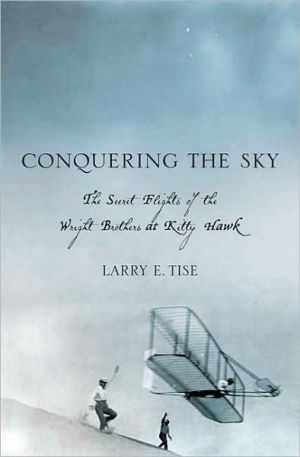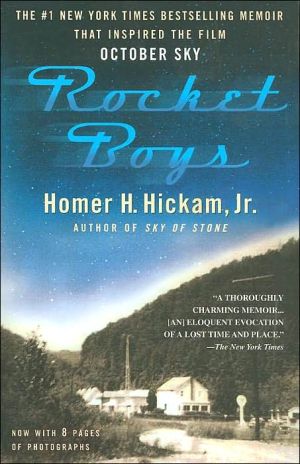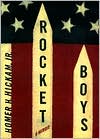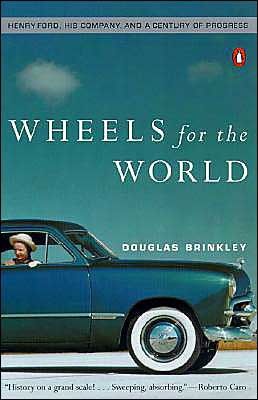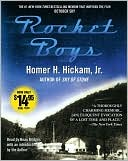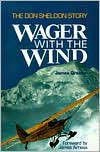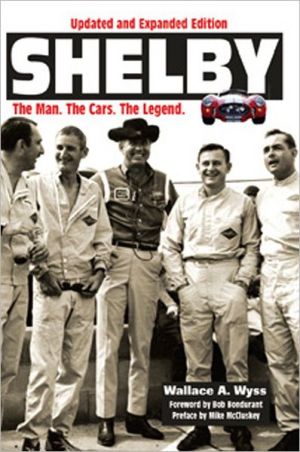Conquering the Sky: The Secret Flights of the Wright Brothers at Kitty Hawk
In seven crucial days of spring 1908, the Wright brothers prepared for what they thought would be a season of secret flights at Kitty Hawk, the culmination of five years spent perfecting their planes. However, they were soon discovered by a host of fast-paced reporters and photographers, forcing the brothers to try to outsmart the world press and avoid close scrutiny of their flying machine and its prowess. Within a few pivotal days, the brothers were catapulted into unwanted worldwide fame...
Search in google:
In seven crucial days of spring 1908, the Wright brothers prepared for what they thought would be a season of secret flights at Kitty Hawk, the culmination of five years spent perfecting their planes. However, they were soon discovered by a host of fast-paced reporters and photographers, forcing the brothers to try to outsmart the world press and avoid close scrutiny of their flying machine and its prowess. Within a few pivotal days, the brothers were catapulted into unwanted worldwide fame as the international press reported their every move using rudimentary telegraphs and early forms of photography. This comedy-of-errors pursuit of pilots and press resulted in a series of bizarre and far-fetched news stories splashed across front pages around the world, by journalists who knew they had just witnessed a milestone in history and were desperate to get to the story first.In Conquering the Sky, Larry E. Tise tells the fascinating untold story of how the Wrights finally introduced the world to the power of flight, taught a legion of gaping aeronauts how to put a plane in the air and keep it there, and astonished thousands of eye-witnesses both in America and in Europe with their amazing feats. Library Journal Tise (Hidden Images) successfully retells the story of the Wright brothers' return to Kitty Hawk, NC, in 1908, eight years after their maiden pilgrimage there, to refine further their updated 1905 flyer. The challenges facing them had been daunting: production of a machine that would fly higher, faster, and farther than earlier Wright models, all the while allowing for an onboard passenger. They had hoped to conduct their shakedown flights in the seclusion of the Outer Banks but instead found themselves the objects of a media circus. Tise's narrative gains momentum as the brothers depart Kitty Hawk, Wilbur to capture praise from VIPs in Europe and Orville to fly brilliantly at Fort Myer, VA, before his near-fatal crash on September 17, 1908. The author rightly portrays the Kitty Hawk interlude as perhaps the last happy time for the brothers before the crushing burdens of fame, litigation, competition, declining business prospects, and the untimely death of Wilbur took the Wright saga in a different direction. VERDICT Drawing from a wealth of primary sources, Tise depicts the brothers' distinct personalities, strengths, and foibles fairly, though he's clearly an unabashed partisan. A tightly focused slice of Wright historiography.—John Carver Edwards, Emeritus, Univ. of Georgia Libs., Athens
Preface 9Principal Characters 13Chronology 15Prologue To Old Point Comfort 231 Return to the Soaring Place 332 Of Swaggerers and Scribes 553 Mixed Messages from Manteo 854 The Seventh Day in May 1095 Aftermath: The Elusive Wrights 1256 The Brothers Wright on Separate Shores 1557 The World Aloft 193Epilogue The Verdict on Secretiveness 207Appendix Eyewitness Testimonials 213"The Flying Machine that Really Flies" (Columbia State, May 20,1908) Zachary McGhee McGhee, Zachary 214"History at Kill Devil Hill" (Collier's Weekly, May 30, 1908) Arthur Ruhl Ruhl, Arthur 218"Watching the Wright Brothers Fly" (Aeronautics, June 1908) Byron R. Newton Newton, Byron R. 224"Our Aeroplane Tests at Kitty Hawk" (Scientific American, June 13, 1908) Orville Wright Wright, Orville 231Notes 235Acknowledgments 243Illustrations 249Index 251
\ From the Publisher"A must-read book by author and historian Dr. Larry E. Tise. Extraordinarily well-written, Tise has delivered a gift of a unique perspective of the early days of Wilbur and Orville Wright’s experiments in flight while expertly weaving in the details of the local culture of that time. This is not just another “beginning of aviation” offering; it is an historical story that manages to educate, entertain and inspire the imagination." —Your Outer Banks Adventure, 2009\ "Drawing from a wealth of primary sources, Tise depicts the brothers' distinct personalities, strengths, and foibles fairly, though he's clearly an unabashed partisan. A tightly focused slice of Wright historiography."— Library Journal, starred review\ "This pivotal 11-day period is chronicled in a new book by East Carolina University professor Larry E. Tise, who is the school’s Wilbur and Orville Wright Distinguished Professor of History." —Dayton Daily News\ "The first detailed account of those 1908 flights, which brought Orville and Wilbur international fame. . . . . These days, nearly everything written about the Wright brothers is derived from other works, he says. Not this book. It's the result of research from letters and newspapers in the U.S. and Europe. "I'm very, very proud to say this is based on all original stuff," he says. He should be." —The Charlotte Observer\ “Tise—dogged researcher, mesmerizing storyteller, human encyclopedia on Wilbur and Orville Wright—has dug out the moment-to-moment, nearly secretive, details of seven days in May 1908 when the Wright Brothers changed the world. Anyone who loves airplanes will love vicariously experiencing the very beginnings of powered controlled flight.”\ —David Hartman, aviation writer, TV documentary producer, and original host of Good Morning America\ "Larry Tise takes us back to six weeks in the spring of 1908 when Wilbur and Orville Wright returned to the Outer Banks of North Carolina. It was a critically important period, when the brothers would fly for the first time in over two and one half years, carry the world’s first aircraft passenger aloft, test a new set of controls and prepare to demonstrate their machine to a waiting world. Wilbur and Orville, the local residents of the Outer Banks, and the newsmen who seek to break one of the great new stories of the century come to life in these pages."\ —Dr. Tom D. Crouch, Senior Curator (Aeronautics), Smithsonian Institution and author of The Bishop's Boys: A Life of Wilbur and Orville Wright\ “Conquering the Sky is the most thorough report on the Wright brothers’ 1908 experiments at Kitty Hawk that has been written to my knowledge. It will fill an important gap in the Wright brothers’ history.”\ —William Harris, former mayor of Kitty Hawk, retired director of the Wright Brothers Memorial, and President of the First Flight Society\ “Larry Tise has captured the drama of a brief but crucial era in aviation history, when the Wright brothers' flying machines first made history worldwide. Extensively researched and far-reaching, this story provides enduring inspiration.”\ —Kathleen C. Winters, author of Anne Morrow Lindbergh: First Lady of the Air\ "In this sprightly new book, Larry Tise separates facts from the myths and deconstructs the many unreliable newspaper accounts about the events at Kitty Hawk. Full of colorful characters and telling details, Tise's book takes readers aloft during the first turbulent years of powered flight."\ —Jeffrey J. Crow, Ph.D., State Historian for North Carolina and Deputy Secretary of Archives and History, North Carolina Department of Cultural Resources\ "When the Wright Brothers returned to Kitty Hawk, North Carolina, almost four and a half years after their first flight, to test their patented and improved aircraft for public demonstration, a dozen or so correspondents dogged them, hoping for a scoop or a photograph. Larry Tise recounts the stream of misinformation and missed opportunities that issued from Kitty Hawk, leaving the public unprepared for the spectacular performances of Orville Wright in the United States and Wilbur Wright in Europe in the ensuing months. The failure of the fifth estate contrasts comically with the triumph of the Wrights in this lively, fascinating history."\ —Alex Roland, Professor of History, Duke University\ "A perceptive examination of a brief but significant episode in the truly amazing story of the two brothers who pioneered practical powered flight. With unique insight, Larry Tise shows how those seeking news of the Wright brothers were misled with fanciful tales and fishermen's yarns, and how easily the truth was distorted and presented as published fact."\ —Philip Jarrett, specialist historian and author on pioneer aviation\ "Larry E. Tise has been able to punctually disclose a very important and so far completely unknown period in the life's work of the Wright Brothers. The well-detailed and entertaining book, the result of very intensive spadework and empathy, had me on the edge of my seat."\ —Gerard J. van Heusden, Historian, The Netherlands\ "[Tise] chose to dig into the Wrights' character at the moment they moved out of obscurity, and his book shows new detail of the characters that surrounded them."— Josh Shaffer, The Durham News & Observer\ "Soars like their revolutionary aircraft. . . Accomplishes that rare goal of being a nonfiction book that reads like a good novel, but not at the expense of factual information or accuracy." —Larry Higgs, New Jersey Ashbury Park Press\ "Tise's smooth, clear writing and his storytelling talents amde Conquering the Sky a special pleasure." —The Chapel Hill News, NC\ "Tise tells all, engagingly...He knows his subject." —Virginian Pilot Review\ "For anyone fanatical about [the Wright Brothers], the book is a must." —Phil Scott, Air and Space Magazine\ \ \ \ \ \ Library JournalTise (Hidden Images) successfully retells the story of the Wright brothers' return to Kitty Hawk, NC, in 1908, eight years after their maiden pilgrimage there, to refine further their updated 1905 flyer. The challenges facing them had been daunting: production of a machine that would fly higher, faster, and farther than earlier Wright models, all the while allowing for an onboard passenger. They had hoped to conduct their shakedown flights in the seclusion of the Outer Banks but instead found themselves the objects of a media circus. Tise's narrative gains momentum as the brothers depart Kitty Hawk, Wilbur to capture praise from VIPs in Europe and Orville to fly brilliantly at Fort Myer, VA, before his near-fatal crash on September 17, 1908. The author rightly portrays the Kitty Hawk interlude as perhaps the last happy time for the brothers before the crushing burdens of fame, litigation, competition, declining business prospects, and the untimely death of Wilbur took the Wright saga in a different direction. VERDICT Drawing from a wealth of primary sources, Tise depicts the brothers' distinct personalities, strengths, and foibles fairly, though he's clearly an unabashed partisan. A tightly focused slice of Wright historiography.—John Carver Edwards, Emeritus, Univ. of Georgia Libs., Athens\ \ \ Kirkus ReviewsPopular history of the Wright Brothers' early success. Tise (History/East Carolina Univ.; Hidden Images: Discovering Details in the Wright Brothers' Kitty Hawk Photographs, 1900-1911, 2005) hones in on one aspect of Wilbur and Orville's famous story. The secretive bike manufacturers of Dayton, Ohio, chose Kitty Hawk, on the Outer Banks of North Carolina, to test their gliding contraptions because of its exceptional winds, soft sand for crash landings and remoteness from prying eyes. From light gliders they moved to a 750-pound gasoline-driven powered flyer, and in 1903 became "the first men on earth to control a powered flying machine across an expanse of level ground at least a few feet above the sandy surface." By October 1905, in Dayton, they had succeeded in extending the small jumps to a historic 39.5 minutes over a course of 24 miles. However, they stopped flying in 1905 in order to perfect their invention, sell the idea to the competing military powers of the day and take measures to protect their proprietary knowledge. As part of the sell, they had to demonstrate their flying prowess, and by the spring of 1908 they were back in Kitty Hawk assembling their modified biplane. This time, the world's press got wind and descended on the small spit of land, hiding in the shrubbery and picking up the yarns spun by the excitable locals from the lifesaving club as well as tales by the station operator of the nearby U.S. Weather Bureau. "The stories were so absurd that the Wrights, when they read them, could only laugh at the wild exaggerations," writes Tise. Nonetheless, over those ten days in May their unprecedented exploits would be broadcast to the world. Taking a conversational,personal tone, the author eschews even cursory examination of the technology for a folksy approach, which reveals many intriguing anecdotes but offers little lasting insight. A lightweight look at an earth-changing moment.\ \
